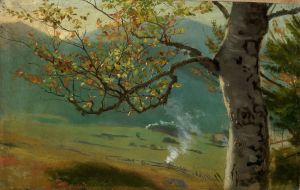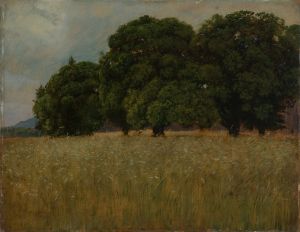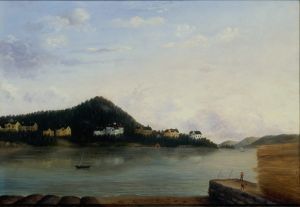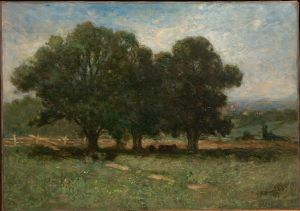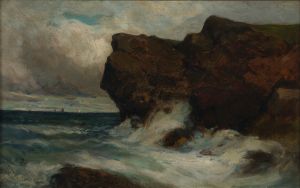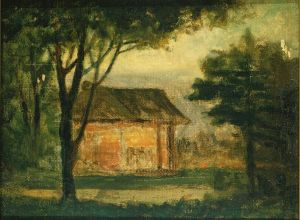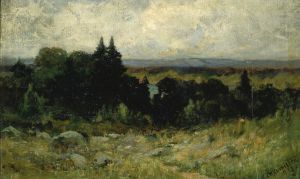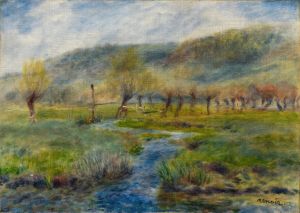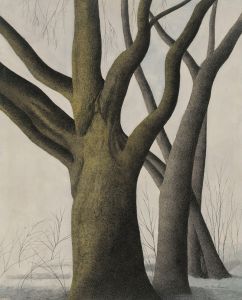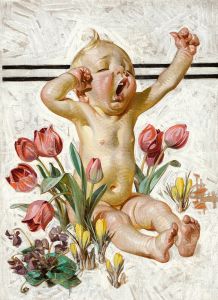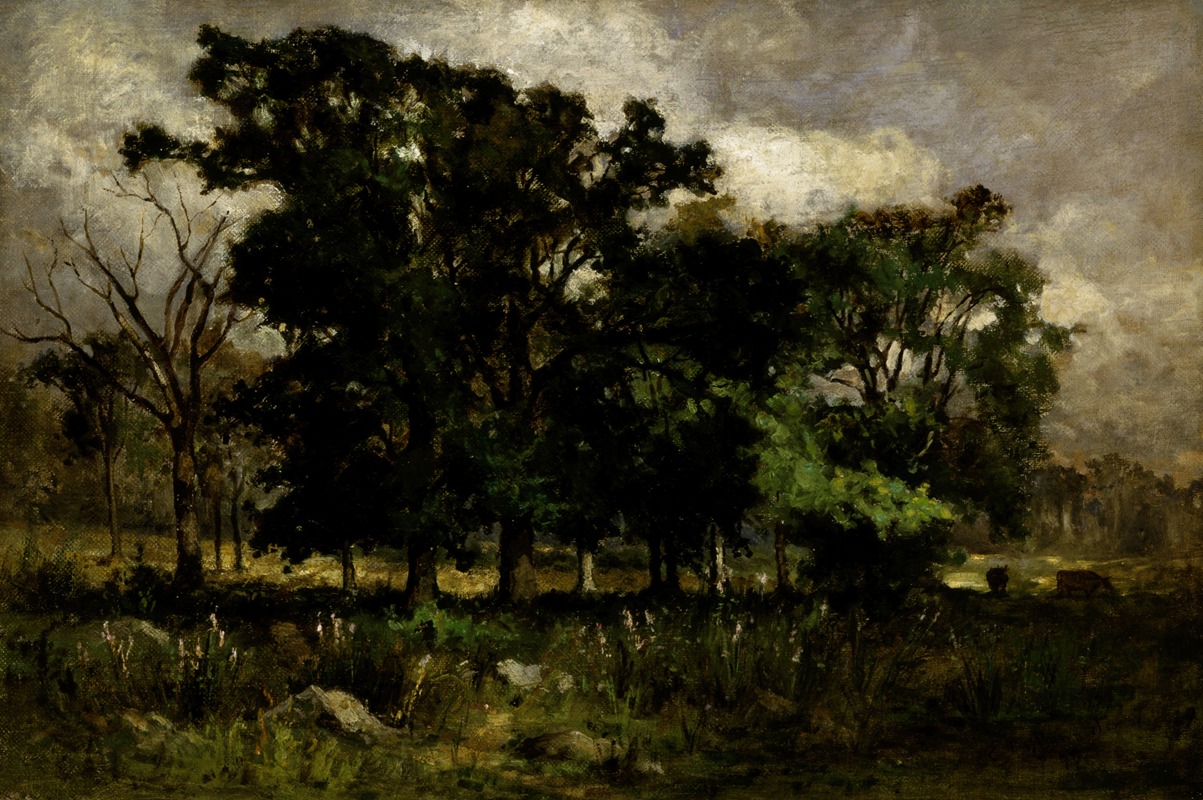
Tree Landscape
A hand-painted replica of Edward Mitchell Bannister’s masterpiece Tree Landscape, meticulously crafted by professional artists to capture the true essence of the original. Each piece is created with museum-quality canvas and rare mineral pigments, carefully painted by experienced artists with delicate brushstrokes and rich, layered colors to perfectly recreate the texture of the original artwork. Unlike machine-printed reproductions, this hand-painted version brings the painting to life, infused with the artist’s emotions and skill in every stroke. Whether for personal collection or home decoration, it instantly elevates the artistic atmosphere of any space.
Edward Mitchell Bannister (1828–1901) was a prominent African American artist known for his contributions to the 19th-century American art scene, particularly within the Barbizon-inspired landscape tradition. One of his notable works, Tree Landscape, exemplifies his mastery of tonal harmony, atmospheric effects, and his deep appreciation for nature. Bannister's works often reflect his commitment to capturing the serene beauty of rural landscapes, and Tree Landscape is no exception.
While specific details about the creation date or provenance of Tree Landscape are not widely documented, the painting is characteristic of Bannister's style, which was heavily influenced by the Barbizon School of France. This movement emphasized naturalistic depictions of rural scenes and was a reaction against the formalism of academic art. Bannister's work often features soft, diffused light and a focus on the interplay between land, sky, and vegetation, elements that are likely present in Tree Landscape.
Bannister's career was marked by significant achievements despite the racial barriers he faced as a Black artist in 19th-century America. He gained national recognition in 1876 when his painting Under the Oaks won a bronze medal at the Philadelphia Centennial Exposition. This accomplishment was particularly notable given the racial prejudice of the time, which often excluded African American artists from mainstream recognition. Bannister's success at the exposition helped solidify his reputation as a skilled and respected artist.
Though Bannister was primarily based in Providence, Rhode Island, where he was an active member of the local art community, his works often transcend specific geographic references, focusing instead on universal themes of tranquility and the sublime beauty of nature. Tree Landscape likely reflects these themes, showcasing Bannister's ability to evoke emotion and a sense of place through his nuanced use of color and texture.
Today, Bannister's works, including Tree Landscape, are celebrated for their artistic merit and historical significance. They serve as a testament to his resilience and talent in an era when African American artists faced systemic discrimination. His paintings are held in various public and private collections, and his legacy continues to inspire discussions about race, art, and representation in American history.
Due to limited specific documentation on Tree Landscape, further details about the painting's dimensions, medium, or current location are not readily available. However, it remains an important example of Bannister's contribution to American art and his dedication to portraying the natural world with sensitivity and skill.







